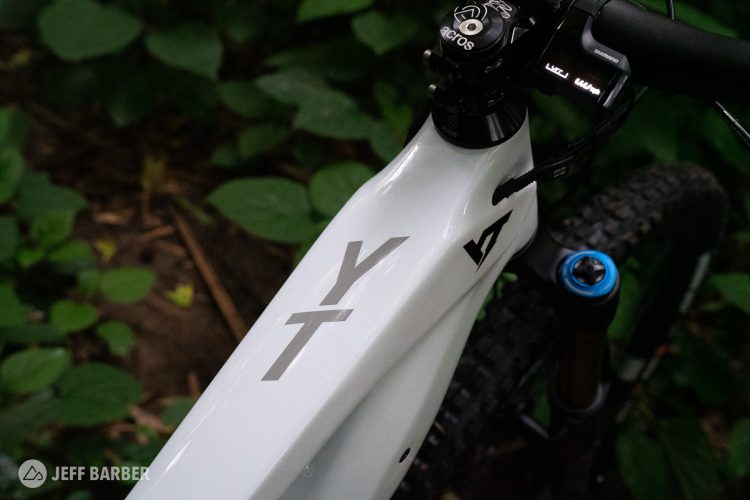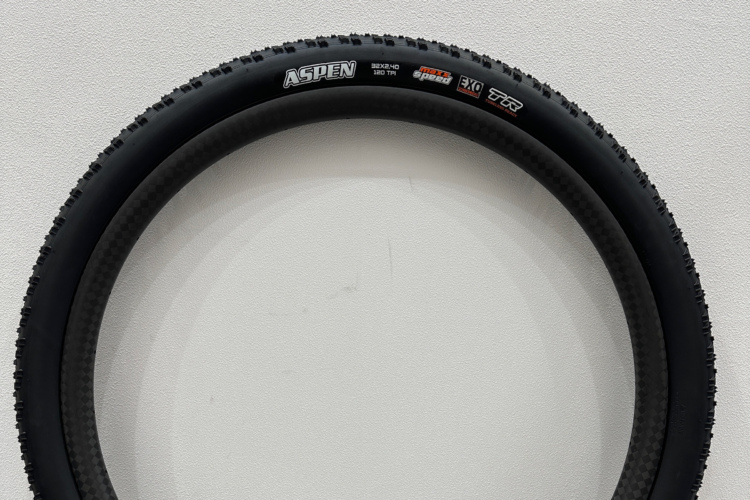
Last week, POC lifted the curtain on their new Kortal helmet, an enduro-worthy half shell. It looks cool and aggressive, and it’s another great model from the Swedish company, but the most interesting thing about the release is that POC is back using the MIPS name on its helmets with the new Integra system.
For the past few years, POC has been using its own proprietary system, Shearing Pad INside (SPIN), a silicone liner, wrapped in fabric, that fits between the wearers’ head and the helmet’s foam shell. To mitigate rotational impact, the silicone allows the helmet to slide over the riders’ head in a similar manner that a yellow, plastic MIPS slip plane would work.
We’ve asked a few helmet brands in the past to shed some light on why they would develop their own tech, like SPIN, Leatt’s Turbine system, or Bontrager’s WaveCel, instead of licensing MIPS, but it’s not something they usually like to talk about.
In October of 2019, POC and MIPS “joined forces” and announced they’d be collaborating on new helmet safety technology. This announcement actually took place ten years after POC was the first helmet to utilize MIPS.
“The POC Cortex DH helmet also sports a unique shell-within-a-shell design called MIPS technology,” wrote Syd Patricio for Singletracks in September 2009. “Basically the system allows the helmet to rotate and dissipate energy before you start to compress the EPP internals which ultimately reduces the amount of strain on your brain. Now that’s a smart helmet!”
On the latest partnership, the two said, “The new collaboration will see POC implement MIPS systems in many of its helmets starting with a new POCito Crane which will be released in late summer 2020. In addition the new partnership will consider new, enhanced rotational protection systems, which will be developed specifically for a number of POC performance helmets to be released in 2021.”
In that release, CEO of MIPS Max Strandwitz said “Our combined efforts, maximizing each other’s strengths, will ultimately lead to enhancements in safety for all.”


As part of the collaboration, POC noted that they will be phasing their own SPIN system out, and replacing the technology with MIPS solutions. We now know that this means POC is using Integra, at least for its newest helmet, the Kortal. The differences between POC’s retired SPIN tech and the new Integra are hard to distinguish at first glance though.
MIPS defines Integra as “an in-mold PC (polycarbonate) layer, which when combined with an optimized padding layer will allow the helmet to move in any direction. MIPS Integra can move in any direction during an oblique fall, allowing the helmet to move relative to the head, which can reduce the amount of force transmitted to a users’ head and brain in the event of an oblique impact.”
Breaking down the technical jargon, there is one difference between POC’s SPIN system and the MIPS Integra, and that is the PC layer on the bottom of the foam on the Kortal. The PC layer is slippery, and with the silicone pads layered on the PC, the pads now slip and roll, whereas they feel like they just roll – or shear – in place on POC SPIN, with the high-friction foam layer underneath. MIPS says the PC layer allows the helmet to achieve better sliding.
“That’s basically the ‘it’,” says Marcus Seyffarth, head of product development at MIPS. We reached out to MIPS to understand the technical differences between SPIN and Integra. “The padding slides on top of the low friction layer molded into the helmet.”
MIPS says, “the biggest advantage is that there are no disadvantages.” And, no, Integra is not safer. It’s just simpler and more comfortable.
When MIPS is developing a system for a helmet, their threshold is that the system must result in at least a 10% reduction in rotational force reduction, and they don’t say that a helmet from Brand A is better or safer than a helmet from Brand B, because there are too many variables in the helmet’s design.
Thus, they can’t say that Integra is safer or better than SPIN and vice-versa, because there are no current helmets that use both systems – though they would argue that Integra is better. As long as the helmet is 10% safer in terms of rotational forces or strain, the helmet can be MIPS-certified, although they usually see 25-30% improvement, says Seyffarth.

In an FAQ document sent by POC which attempts to answer this, they say “It is a new system for POC helmets, developed from existing MIPS technology which allows the silicone pads to move in any direction on an in-mold surface. MIPS Integra is one ‘system’ that works with the best of different materials and technologies to give users a rotational impact system which is truly integrated.”
POC notes that to help development and future consumer safety, and create technology without patent limitations, “POC provided access to its silicone pad technology, its extensive body of knowledge, research and testing system to MIPS which will now provide users with a truly holistic and integrated safety solution.”
MIPS acknowledged that the silicone pads in combination with the low-friction PC layer helped the Kortal achieve its MIPS certification, though the silicone pads might not be a part of other designs. POC’s use of silicone padding is inspired by comfort, though it can play a part in rotational force reduction too.
“The helmet has been developed for that padding. Maybe you could have some other kind of padding, but that’s the padding that it has been tested and approved with. I mean, it’s part of the system and it adds to the system as of now, but for the Integra system, it’s not the crucial part. It’s the low-friction layer that’s the crucial part.”
The POC/SPIN helmets that I’ve worn are generally comfortable, even more so than the plastic-inserted MIPS helmets, which can add weight and a larger profile to helmets, although the new Kortal is not low-profile by any means.


POC’s own solution to aid rotational impacts was truly integrated into the helmet and have performed well in Virginia Tech’s ratings, amongst many other MIPS helmets. With POC phasing SPIN out, putting Integra into its snow helmets this year, and more bike helmets next year, those VT studies will have even more MIPS helmets in it. MIPS Integra is not exclusive to POC either, so the tech should show up in other brands’ helmets sometime in the near future.
Basically, what all this comes down to is not just that MIPS seemingly acquired POC’s helmet tech. The first rendition has come to life in part because of the silicone padding, and we will see if that remains a necessity when more helmets debut with Integra.
In the end, as POC and MIPS stated in their partnership in 2009 and 2019, the collaboration will lead to enhanced safety for all. And if safety can’t be measured or compared from one helmet to the next, then at least MIPS is developing past the plastic, yellow slip planes and into a more comfortable future for all.
Check out our mountain bike helmet buyers guide and our picks for the best mountain bike helmets.











1 Comments
Mar 10, 2021